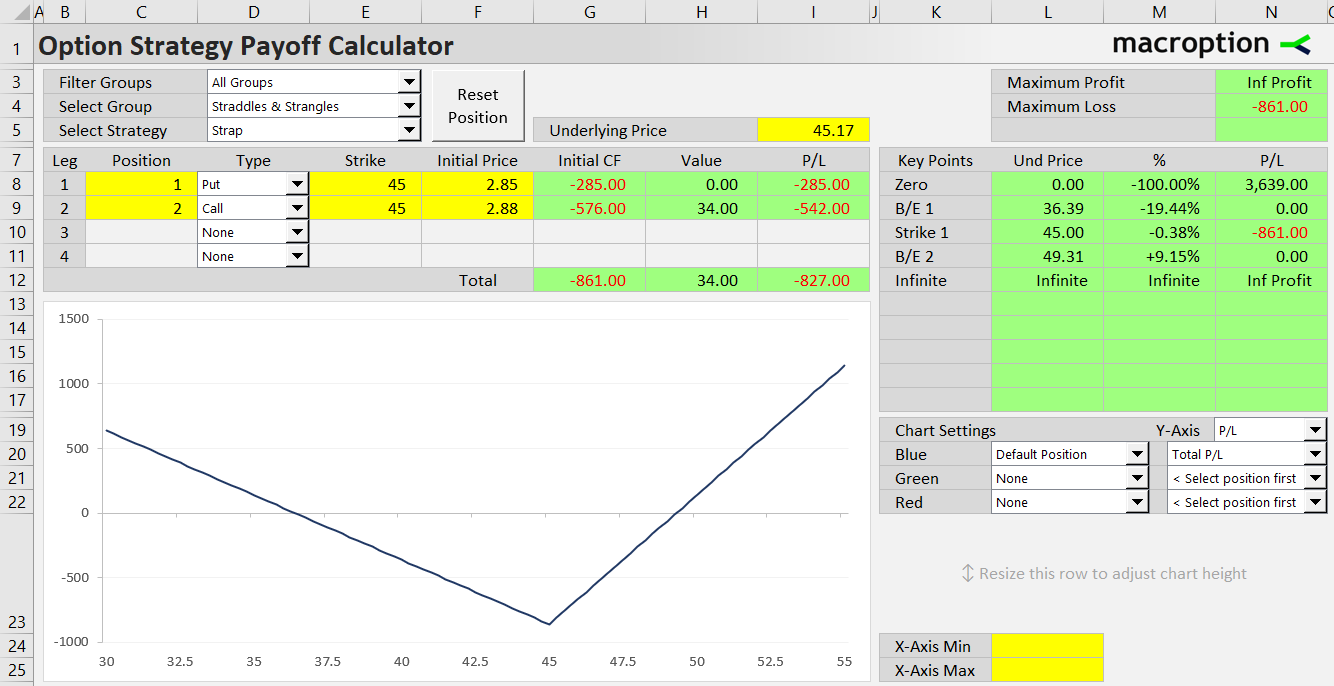Strap, a variation of long straddle with more calls than puts, is a long volatility option strategy with two legs (and a bullish bias). It has limited loss and unlimited potential profit.

Setup
To create a strap position, buy both call and put options on the same underlying, with the same strike and expiration.
For a position to be a strap, the number of call option contracts must be greater than the number of puts.
If it is smaller, the strategy is called a strip. If it is equal, it is a straddle.
Example
For example, to open a strap position, buy one contract of 45 strike put options and two contracts of 45 strike call options with the same expiration date and on the same underlying security.
Ratio of Puts and Calls
The exact ratio of call and put contracts can be anything, as long as there are more calls than puts.
The greater the number of call contracts relative to puts (for instance, 5 calls to 1 put), the more asymmetric (more bullish) the position will be. On the contrary, the closer the position sizes are (such as 5 calls and 4 puts), the more the position resembles long straddle.
Payoff
Payoff diagram of the strap strategy has the same V shape as long straddle, only the slopes of the two halves are different. Profit grows faster on the right side due to the greater number of call contracts relative to puts.

Unlike a straddle, the distance of break-even points from the strike is unequal. The break-even is reached much faster on the upside.
Exposure to Volatility and Time
The objective of the strap option strategy is to profit from a large, fast move in underlying price, preferably to the upside. Alternatively, the position can also appreciate when implied volatility increases, as all the options are long.
A strap position loses value when underlying price stays near the strike with passing time, and/or when volatility decreases. Generally, the expected underlying price move must be large enough and fast enough to overcome time decay.
Greeks
Unlike strip (a similar strategy, but with more puts than calls), strap has positive delta when underlying price is near the strike. This is because it includes a higher number of calls (which have delta about +0.5) than puts (with delta about -0.5).
Gamma is always positive, because all options are long. Therefore, whenever underlying price goes up, the position's delta also increases (and vice-versa). When underlying price drops below the strike, delta of the calls declines towards zero, while put delta gets closer to -1. At some point, total delta of the strap position turns negative, allowing the overall profit to grow as underlying price keeps falling.
Like straddle, strangle, and strip, the strap strategy has positive vega (it gains with rising implied volatility) and negative theta (it loses with passing time).